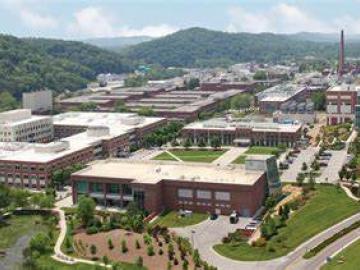Filter News
Area of Research
- Advanced Manufacturing (22)
- Biology and Environment (25)
- Building Technologies (1)
- Clean Energy (82)
- Electricity and Smart Grid (1)
- Functional Materials for Energy (1)
- Fusion and Fission (6)
- Fusion Energy (1)
- Materials (24)
- Materials for Computing (5)
- National Security (3)
- Neutron Science (6)
- Nuclear Science and Technology (4)
- Supercomputing (19)
News Topics
- (-) 3-D Printing/Advanced Manufacturing (115)
- (-) Simulation (41)
- Advanced Reactors (32)
- Artificial Intelligence (81)
- Big Data (49)
- Bioenergy (86)
- Biology (93)
- Biomedical (56)
- Biotechnology (20)
- Buildings (53)
- Chemical Sciences (55)
- Clean Water (29)
- Climate Change (91)
- Composites (25)
- Computer Science (179)
- Coronavirus (46)
- Critical Materials (23)
- Cybersecurity (35)
- Decarbonization (70)
- Education (3)
- Element Discovery (1)
- Emergency (2)
- Energy Storage (106)
- Environment (188)
- Exascale Computing (33)
- Fossil Energy (4)
- Frontier (37)
- Fusion (51)
- Grid (59)
- High-Performance Computing (78)
- Hydropower (11)
- Irradiation (3)
- Isotopes (46)
- ITER (7)
- Machine Learning (43)
- Materials (137)
- Materials Science (130)
- Mathematics (6)
- Mercury (12)
- Microelectronics (2)
- Microscopy (50)
- Molten Salt (8)
- Nanotechnology (60)
- National Security (54)
- Net Zero (10)
- Neutron Science (127)
- Nuclear Energy (100)
- Partnerships (37)
- Physics (58)
- Polymers (31)
- Quantum Computing (28)
- Quantum Science (64)
- Renewable Energy (2)
- Security (23)
- Software (1)
- Space Exploration (24)
- Statistics (2)
- Summit (56)
- Sustainable Energy (115)
- Transformational Challenge Reactor (7)
- Transportation (92)
Media Contacts

Groundwater withdrawals are expected to peak in about one-third of the world’s basins by 2050, potentially triggering significant trade and agriculture shifts, a new analysis finds.

ORNL researchers modeled how hurricane cloud cover would affect solar energy generation as a storm followed 10 possible trajectories over the Caribbean and Southern U.S.

Researchers simulated a key quantum state at one of the largest scales reported, with support from the Quantum Computing User Program, or QCUP, at ORNL.

Rishi Pillai and his research team from ORNL will receive a Best Paper award from the American Society of Mechanical Engineers International Gas Turbine Institute in June at the Turbo Expo 2024 in London.

The Society of Manufacturing Engineers has honored three Oak Ridge National Laboratory researchers with the 2024 SME Susan Smyth Outstanding Young Manufacturing Engineer Award.

ORNL’s Erin Webb is co-leading a new Circular Bioeconomy Systems Convergent Research Initiative focused on advancing production and use of renewable carbon from Tennessee to meet societal needs.

Scientists at ORNL have developed 3D-printed collimator techniques that can be used to custom design collimators that better filter out noise during different types of neutron scattering experiments
ORNL scientists have determined how to avoid costly and potentially irreparable damage to large metallic parts fabricated through additive manufacturing, also known as 3D printing, that is caused by residual stress in the material.

Canan Karakaya, a R&D Staff member in the Chemical Process Scale-Up group at ORNL, was inspired to become a chemical engineer after she experienced a magical transformation that turned ammonia gas into ammonium nitrate, turning a liquid into white flakes gently floating through the air.

Kate Evans, director for the Computational Sciences and Engineering Division at ORNL, has been awarded the 2024 Society for Industrial and Applied Mathematicians Activity Group on Mathematics of Planet Earth Prize.




